My Mexican American family never celebrated Día de Muertos. Then Abuela died.
John Paul Brammer is the writer of the advice column and forthcoming book “¡Hola Papi!”
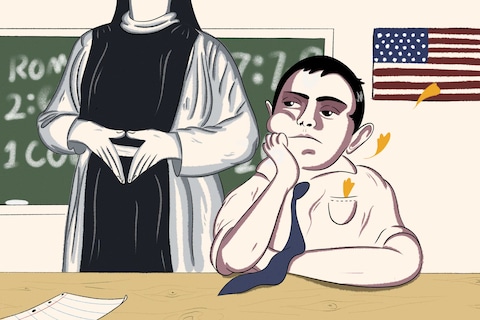 (JP Brammer/JP Brammer for The Washington Post)
(JP Brammer/JP Brammer for The Washington Post) Catholic school taught me a binary view of death. There at St. Mary’s in Lawton, Okla., I learned that death was the opposite of life, something to be overcome through grace and good works. This made perfect sense to a kid who, like most, was afraid of dying. But the older I got and the less binary the world around me became, the more I found myself facing an existential crisis. If everyone dies, how was I supposed to just go on living as if everything was fine?
I went a long time without losing anyone close to me. But then, a few years ago, Abuela, my grandmother, died, and my anxieties around the fleeting nature of life compounded. It was in the wake of her passing that my Mexican American family, as if out of an ancient instinct, returned to the tradition of Día de Muertos, the Day of the Dead. Neither my generation nor my parents’ had ever celebrated the holiday, but a few days after her funeral in October 2016, my mom, sister, aunt and I went to Mexico to take part.
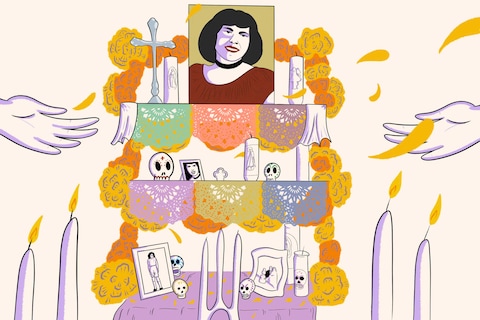 (JP Brammer/JP Brammer for The Washington Post)
(JP Brammer/JP Brammer for The Washington Post) The thing about my family is, we’re pretty assimilated. My abuelos were first-generation Mexican Americans. Abuela struggled with English, and she didn’t teach Spanish to her children. She wanted them to be American through and through. But it wasn’t just the language that fell away. We lost the traditions, too. We lost countless recipes, posadas at Christmas, quinceañeras. Despite all this, following Abuela’s passing, we constructed in her honor an ofrenda, the altar that loved ones get during Día de Muertos.
[Leer en español: Lo que me llevo a celebrar Dia de Muertos y a recuperar mis raices mexicanas]
But what was the ofrenda meant to do? It’s easy enough to nail the trappings of Mexico’s vibrant traditions, especially one as visually striking as Día de Muertos, but the philosophies and roots are more elusive. I wanted to know the reasons behind the sugar skulls and marigolds and offerings of food. Otherwise, what was I “reclaiming” at all? The colors, the symbols, the recipes — anyone could get their hands on those. I wanted to get at the soul of the tradition.
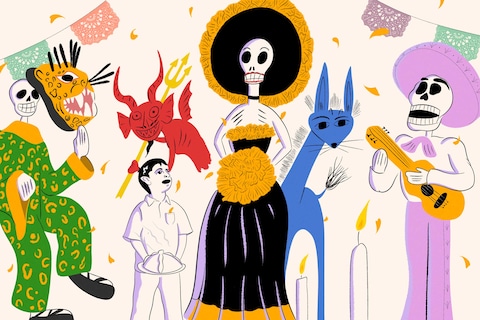 (JP Brammer/JP Brammer for The Washington Post)
(JP Brammer/JP Brammer for The Washington Post) As a Chicano who thought anything south of the U.S.-Mexico border was automatically authentic and anything north of it fake, it surprised me to learn that the Day of the Dead as I knew it was itself born out of an identity crisis. In the 1970s, Mexico’s government promoted the holiday to boost tourism and firm up a national identity. The people framing this concept, called mexicanidad, looked to the country’s pre-colonial past and in it saw the Day of the Dead, which started as an indigenous tradition. Properly romanticized, it could become a cornerstone of the Mexican ethos they were inventing.
Knowing this gave nuance to my understanding of the holiday. I didn’t want to simply trade one manufactured nationalistic identity for another. I didn’t want to think of Mexico as a monoculture, to let a commercial reinterpretation of the holiday paper over the indigenous and Afro-Latino roots I wanted so badly to access. “Reclamation,” in the end, isn’t such a straightforward process. I was still bringing binary thinking — border thinking — to how I saw my family and how I saw myself.
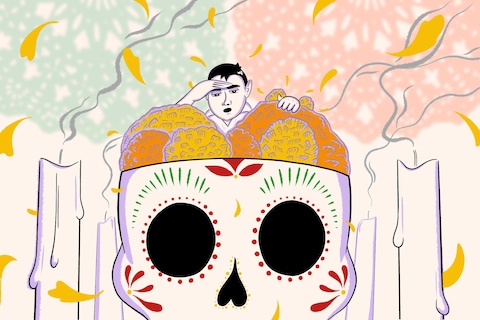 (JP Brammer/JP Brammer for The Washington Post)
(JP Brammer/JP Brammer for The Washington Post) That’s why Día de Muertos is such an important occasion. It holds that dying and living are not opposites but rather two parts of one process, with just a breath in between. Through this lens, death isn’t an antagonist, a horrifying thing we must look away from. Death is festooned with flowers, candles and brightly colored papel picado because Día de Muertos wants us to look squarely at the way things end. It wants us to accept it, laugh at it and revere it. The only thing it asks us to not do is ignore it.
I’ve come to understand that this holiday isn’t about romanticizing the past or about wishing we could bring those who’ve died back to life. Día de Muertos instead asks us to consider that we exist in conversation with the people who came before us and the people who will come after us. It says the border between life and death — and every border we encounter in between — is porous. It asserts the joyful fluidity of being alive.
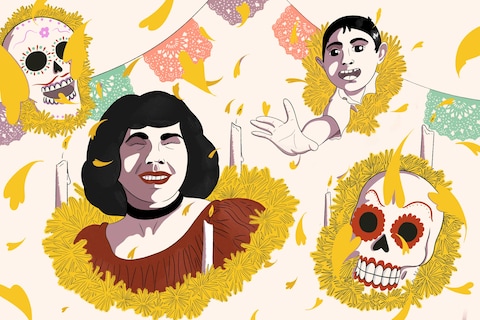 (JP Brammer/JP Brammer for The Washington Post)
(JP Brammer/JP Brammer for The Washington Post) Now, every year, my family and I travel to Mexico to celebrate dying. We mourn the people we’ve lost, and we laugh about the memories they left us. We put together our ofrendas, light candles and enjoy one another’s company, reminiscing in English but with a new vocabulary for life and what comes after. In seeking to connect with Abuela, we became more in tune with ourselves, where we come from and where we’re going.
As the world seems to get increasingly grim, particularly for Latinos, I still look forward to every October, when the bakeries fill with pan de muerto and sugar skulls. I look forward to the first days of November, when the wall between life and death comes tumbling down, and we, no matter who we are or how far away we’ve traveled, find our way home.
Read more:
John Paul Brammer: Julián Castro can’t speak Spanish. Here’s why that’s so authentic.
David Von Drehle: We get Cinco de Mayo wrong. But we’re not wrong to celebrate it.
John Paul Brammer: I’m from a Mexican family. Stop expecting me to eat ‘authentic’ food.
Sign up for the Post Opinión newsletter for Spanish-language op-eds and essays from The Post






